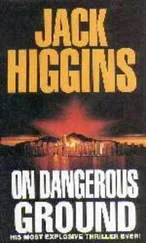Lieutenant Richards, the Weapons officer, had the final word. “It looks like you paid attention in Manta school, Mr. Mitchell.” He smiled and said, “Bravo Zulu.”
“Thank you, sir.” The praise was more than welcome and Jerry felt it wash over him, but his eyes were drawn back to the video screen. Emily had remained focused, thank goodness, but there was nothing for anyone to do now but watch as Reynolds and Harris manhandled the warheads off the back of the Manta.
The Manta’s passive sonar display spiked and jiggled as it picked up the sounds of the two warheads being untied, then pulled across the upper hull. The surface was smooth and curved downward, so the divers could let gravity do at least some of the work. Of course, the Manta had a sonar array running along each flank, but he’d just have to take his chances on it being damaged.
Through the camera they could see Reynolds and Harris take the first warhead crate and half-slid it off the Manta’s hull. They managed to work it over to a recess in the hangar, but Jerry couldn’t see exactly where they put it. He trusted the COB’s ability to keep it clear of the latches and the other equipment inside, but he couldn’t really relax until the Manta had been stowed and launched again.
If that ever happened. He risked another call to control. They could see and hear everything that was going on, but he couldn’t see the plot or the fire-control display. “Conn, U-bay, what’s the status of the Grishas?”
After a pause, the talker said, “It’s still hard to say, but close.”
Hardy came on the line. “Mr. Mitchell, do you have a plan for the Grishas?”
“Sir, I’d like to use the Manta’s simulator mode. I can lead them off to the west, toward the coastline, so Memphis can head northeast. The problem is that I can’t do it for very long. I’ll need high speed to evade them, but I’m only good for about half an hour at twenty knots.”
“I don’t think that’s going to work,” Hardy countered. “They’re relying on active sonar, and sounding like a 688 won’t really distract them until you’re very close, possibly too close to evade if your battery’s that low.”
Two spikes on the Manta’s passive sonar display meant “All clear” from Reynolds. Jerry looked at the video display to see the two divers wrestling the crated warhead into a cavity in the hangar. They looked to be clear of the Manta by several feet, and he carefully applied just enough speed to get the vehicle moving.
At a walk, he saw the Manta slide across the video screen and away from Memphis’ hull and the two men working on it. Once he was clear, he headed south-southeast, directly toward the two Russian patrol ships.
“Conn, U-bay. Divers have unloaded the last warhead crate, and I’m free to maneuver. Coming to course two three zero.”
As he maneuvered the Manta, he continued his discussion with Hardy. “Sir, what if I drop a decoy in their path? It will get their attention and draw them away from us.”
The Manta carried three ADC Mark 3 torpedo countermeasures and three larger ADC Mark 4s. The Mark 4 was designed to jam both active and passive sonars by generating a lot of noise and by providing a hard echo for a searcher’s ping. They weren’t the most sophisticated devices. For instance, they didn’t move, and they didn’t sound like a submarine, but it would take the searching ships a little time to figure that out.
Hardy paused only a moment before answering. “All right, but not directly in front. I’ll steer you to a spot along their path — and within their sonar range — but I want you to pull them closer inshore. We’ll head away to the east and then north. You can break to the north at quiet speed and rendezvous with us on the other side of the Grishas.”
“Aye, aye, sir.”
“Steer two five zero at ten knots. How long can you maintain that speed?”
“Steer two five zero at ten knots, aye sir. I can keep this speed for four hours.”
“Good. Keep your active sonar off. We’ll use Manta’s passive set with our sonar bearings to cross-fix their location.”
“Understood,” Jerry replied and sent the course and speed commands to the Manta.
While Jerry planned how to use the Manta with the Captain, he continued to watch the divers finish their task. They had to not only stow the warheads, they had to make sure that they wouldn’t rattle around or come loose. Reynolds and Harris had only the tools they carried, limited space, poor light, and their time was almost gone. Davis had brought Huey in closer, so that the divers could almost touch the vehicle, but it was impossible to see exactly what they were doing, or how much longer it would take.
When they finally straightened and swam toward the forward escape trunk, it caught Davis by surprise. She quickly panned the camera right, then gave the ROV just enough speed to follow the divers toward the escape trunk.
They both fit in the escape trunk this time, or rather, they made themselves fit. Everyone in control and the torpedo room watched Reynolds and Harris close the hatch, as Hardy gave orders for others to help them inside.
“Dr. Davis, I need you to do one more thing before you stow the ROV. Make a pass along Memphis’ underside. I especially want to make sure the rudder and propeller haven’t been fouled by anything.”
“Do we really have the time?” Davis asked. She was obviously thinking about the approaching Russian ships.
“Mr. Mitchell will buy us time. I need to know if Memphis is free to maneuver.”
“Huey’s battery gauge is in the red, sir.”
“The ROV can move another six hundred feet,” Hardy stated sharply. “Do it,” he ordered.
“Aye, aye, sir.” Davis answered reflexively and dove Huey downward. The ROV was near the stern, so she steered toward that end.
Jerry grinned. “ ‘Aye, aye?’ Next thing you’ll be sporting a patch on one eye and a peg leg.”
“I’ve been on this sub too long,” she countered. She smiled, but kept her eye on the battery gauge.
The Manta’s sonar autodetect warning suddenly flashed on, and Jerry saw a broadband contact show up on the display screen. “Conn, U-bay. I’ve got a strong passive sonar contact bearing one eight zero. Looks like the Grishas.”
The phone talker replied. “The XO says to keep passing up bearings and change course to due south. He wants to get a good cross-fix.”
That pleased Jerry. Finding out exactly how far away those Russian patrol craft were would lower his stress level. They also needed that information to build a track, and that would tell them where he needed to release the decoy. Meanwhile, Huey had reached Memphis’ keel and the seabed just below her.
From the ROV’s point of view, Memphis loomed overhead like a metal storm cloud. Her curved hull vanished away from the camera in all directions. Hardy talked her down the length of the hull, telling her where to point the camera and when to slow down.
The bottom lay only ten to fifteen feet below the sub, rock with silt filling in the hollows. As little experience as he’d had in subs, Jerry knew that Memphis was dangerously close to the seabed, especially considering the poor charts.
The starboard side of the propeller and control surfaces appeared unobstructed, and the seawater suctions were all clear. Hardy then had her steer Huey past the bow so she could come down the starboard side.
“I’ve got something on the active sonar,” Davis reported. “It’s about a hundred yards away, off to the southwest.
“Back toward the barge,” Hardy observed. “We don’t need to worry about any more dump sites.”
“It’s too small to be a dump site,” Emily answered, “and the object is small, more the size of an oil drum. And I can see lines or cables running from it.”
Читать дальше












